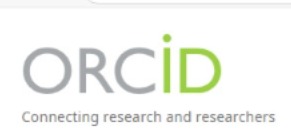Cultivating Qur'anic Character Through The Sekolah Sisan Ngaji Program In Paud Institutions (Implementation Of Blora Regency Government Program)
DOI:
https://doi.org/10.63889/pedagogy.v18i2.314Keywords:
Qur'anic Character, Sekolah Sisan Ngaji (Religious School Program), Early Childhood EducationAbstract
Character education is an effort to realize values that are considered lost today. Good character will form a good soul. Quality character needs to be fostered and formed from an early age (golden age), because this period has been proven to be very decisive in determining a child's ability to develop their potential. This research is field research using a qualitative descriptive approach, which is research that seeks to describe systematically, factually and accurately the facts and characteristics of a particular population. Based on the results of research on the cultivation of Qur'anic character in early childhood at BA Aisyiyah Ngawen, the research findings include: 1) Methods of cultivating Qur'anic character in early childhood. The cultivation of Qur'anic character in early childhood at BA Aisyiyah Ngawen consists of habituation of Dhuha Prayer, Qur'an Recitation, and reading Stories of Prophets and Messengers. 2) Supporting factors and inhibiting factors for cultivating Qur'anic character in early childhood at BA Aisyiyah Ngawen, namely supporting factors include maturity and good environmental factors. And the inhibiting factors are nutritional or dietary intake factors and poor environmental factors.
References
[1] Suherman, A. (2021). Early childhood Islamic education. Jakarta: Prenadamedia Group.
[2] Lestari, M., & Fauziah, N. (2020). Interactive learning strategies for early childhood. Journal of Children's Education, 9(2), 101–110. https://doi.org/10.36722/jpa.v9i2.1603.
[3] Ahmad, M. (2019). The Tilawati method in learning the Qur'an. Al-Bayan Journal: The Journal of Qur'an and Tafsir, 24(1), 55–63. https://doi.org/10.22373/albayan.v24i1.4929.
[4] Aisyah, S., Yuliati, N., & Munawaroh, L. (2020). The application of the Tilawati method in improving the ability to read hijaiyah letters in early childhood. Journal of Early Childhood Islamic Education, 5(1), 45–54.
[5] Nurhidayati, S. (2019). The effectiveness of the Tilawati method in improving the ability to read the Qur'an in early childhood at TPQ Al-Furqan. Scientific Journal of Islamic Religious Education, 11(2), 102–110.
[6] Ramadani, R., & Ma'ruf, U. (2021). The effect of the Tilawati method on the ability to recognize hijaiyah letters in children aged 5–6 years. Golden Age: A Scientific Journal of Early Childhood Growth and Development, 6(1), 12–20.
[7] Anwar, S. (2023). The concept of Islamic education in developing the personality of school-age children. Journal of Pedagogy, 16(2), 1–16. https://doi.org/10.63889/pedagogy.v16i2.173
[8] Piaget, J. (1952). The origins of intelligence in children. New York: International Universities Press.
[9] Nizar, A. (2019). The hijaiyah letter recognition strategy in early childhood is based on a multisensory approach. Journal of Children's Islamic Education, 5(2), 54–62.
[10] Fleming, N. D. (2001). Teaching and learning styles: VARK strategies. Christchurch, New Zealand: Neil Fleming.
[11] Ahmad, M. (2019). Tilawati method in learning to read the Qur'an in early childhood. Jakarta: Pustaka Al-Hikmah.
[12] Isnaini, R. (2022). The application of the Tilawati method to improve the ability to read hijaiyah letters for children aged 5-6 years. Journal of Early Childhood Education, 10(1), 23–30.
[13] Maulida, N., Hartati, S., & Wulandari, A. (2023). The influence of the Tilawati method on participation and recognition of hijaiyah letters in PAUD. Journal of Islamic Religious Education, 15(1), 77–89.
[14] Sari, D., & Maulana, F. (2021). Increase children's motivation to learn to read the Qur'an through the Tilawati method. Qur'an and Hadith Education Journal, 8(3), 112–121.
[15] Hidayat, R. (2020). The effectiveness of the Tilawati method on the ability to read hijaiyah letters in early childhood. Journal of Islamic Education, 7(2), 145–158. [15] Kemmis, S., & McTaggart, R. (1988). The action research planner (3rd ed.). Geelong, Australia: Deakin University Press.
[16] Kemmis, S., & McTaggart, R. (1988). The action research planner. Deakin University Press.
[17] Sugiyono. (2017). Educational research methods: Quantitative, qualitative, and R&D approaches (24th printing). Bandung: Alfabeta.
[18] Fleming, N. D. (2001). Teaching and learning styles: VARK strategies. Christchurch, New Zealand: Neil Fleming.
[19] Arikunto, S. (2010). Research procedure: A practical approach (Revised edition VI). Jakarta: Rineka Cipta.
[20] Creswell, J. W. (2014). Research design: Qualitative, quantitative, and mixed methods approaches (4th ed.). Thousand Oaks, CA: Sage Publications.
[21] Isnaini, R. (2022). The effectiveness of the Tilawati method in improving the ability to read hijaiyah letters in early childhood. Journal of Islamic Education, 10(2), 145-158.
[22] Maulida, N., Rahman, A., & Putri, S. (2023). The application of the Tilawati method in learning the Qur'an in early childhood education: A case study in the Central Java region. Journal of Early Childhood Education, 12(1), 67-79.
Downloads
Published
How to Cite
Issue
Section
License
Copyright (c) 2025 Achmad Irchamni, Kristiyuana Kristiyuana, Haji Kaswari

This work is licensed under a Creative Commons Attribution-ShareAlike 4.0 International License.






